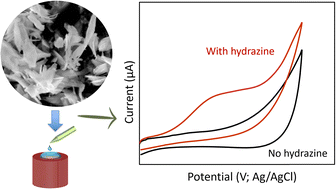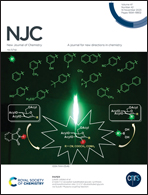Fabrication of a highly sensitive ultrathin nanosheet-like CuO nanostructure-based non-enzymatic electrochemical sensor for hydrazine detection
Abstract
Hydrazine monitoring for appropriate safety measures is crucial in safeguarding water quality, and protecting human health and the environment. Hydrazine sensing in water, which would prevent hydrazine exposure, has challenges associated with its detection and measurement. Herein, we report the synthesis of an ultrathin nanosheet-like CuO nanostructure using a one-step low-temperature solution process and utilize it to design an electrochemical non-enzymatic sensor for hydrazine detection. The synthesized ultrathin nanosheet-like CuO nanostructure material was characterized in detail. The non-enzymatic hydrazine sensor was evaluated using the cyclic voltammetry (CV) technique and non-enzymatic sensing performance was estimated after measuring the response in different hydrazine concentrations. The non-enzymatic hydrazine sensor showed good sensitivity (1300 μA mM−1 cm−2) in a wide-detection range (up to 3.5 mM). This non-enzymatic hydrazine sensor is associated with several advantages such as low cost, excellent stability, reproducibility, and selectivity. The ultrathin nanosheet-like CuO nanostructure offers a high surface area for hydrazine detection and can be used for future research in other analyte sensing.



 Please wait while we load your content...
Please wait while we load your content...